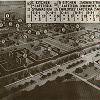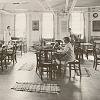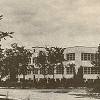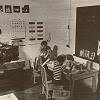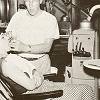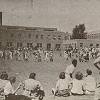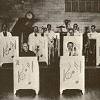Occupational Hazards |
|
A PHP Error was encountered
Severity: Notice
Message: Only variables should be passed by reference
Filename: pages/site.php
Line Number: 13

- Also Known As:The Center for Forensic Psychiatry, York Woods Center, Ypsilanti Regional Psychiatric Hospital, YSH
- Genre:Criminal / Forensic Psychiatric Hospital, Psychiatric Hospital
- Comments: 1,062
- Built:1930
- Opened:1931
- Age:94 years
- Closed:1991
- Demo / Renovated:2006
- Decaying for:15 years
- Last Known Status:Demolished

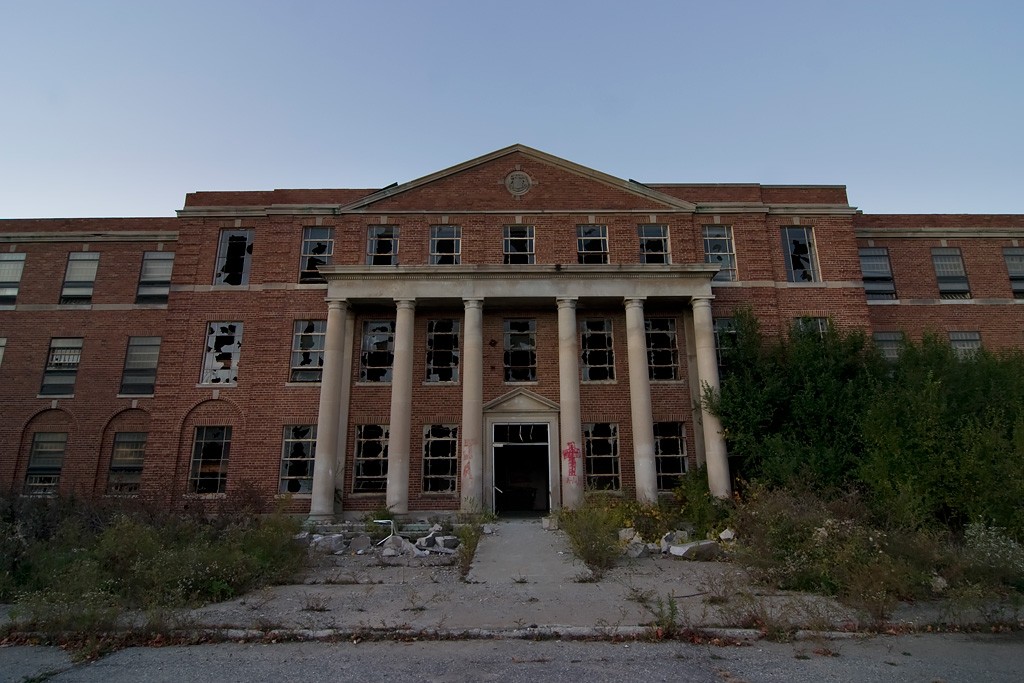
Photo © 2005 Tom Kirsch, opacity.us
Ypsilanti State Hospital History
In 1930, the state of Michigan provided $1.5 million for a psychiatric hospital to be built to help accommodate the loads of the other state hospitals at the time (Kalamazoo, 1885; Pontiac, 1878; Traverse City, 1885; Newberry, 1893). The site chosen for the new hospital was Ypsilanti, partly due to the proximity of Michigan University in Ann Arbor and availability of land. Construction began on June 16, 1930, with the architectural firm of Albert Kahn from Detroit designing the buildings. The work was performed at a rapid pace, and the first patients were admitted only one year after construction began. There were 922 patients living at the hospital one year after opening, each costing 80 cents a day on average.
As the hospital moved through the years of the Great Depression, problems of cut wages, overcrowding, and long waiting lists for admissions began to arise. In 1936, the state and federal governments issued plans for further expansion of the hospital, which included buildings C-3 through C-6, B-3 and B-4, and the Occupational Therapy Center. Although Ypsilanti State Hospital suffered from similar overcrowded conditions at other facilities across the United States at the time, it received a positive report from Albert Deutsch in his book Shame of the States:
Two days after my visit to the Detroit Receiving Hospital I went through the Ypsilanti State Hospital thirty-five miles away, where the kindly superintendent, Dr. Orus R. Yoder, showed me through ward after ward where neither mechanical nor chemical restraint was used. There was not a single straitjacket or restraining instrument in the entire hospital except in the museum of antiquities. Contented patients moved freely among fearless and tenseless nurses and attendants. The contrast spoke for itself.
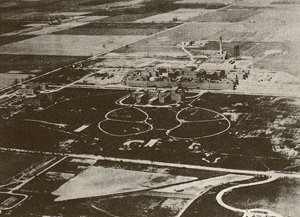
Aerial View
At the end of 1936, a plethora of different treatments was being administered to the patients to aide in their recovery. 11,807 hydrotherapy treatments included "needle showers, fan douches, jet douches, salt glows, general massages, local massages, Sitz baths, foot baths, ultraviolet radiations, electric light bakes, cold wet sheet packs, warm we sheet packs, continuous baths, electric light cabinet baths, bubble baths, hot fomentations, colloidal baths and surgical dressings." 1,522 physiotherapy treatments included "ultra-violet light, infrared light, electric bake, and diathermy." General paresis was being treated by heavy metals and induced malaria fever.
Insulin and Metrazol shock therapies were introduced at the hospital in 1937, shortly followed by electric shock. By the early 1940s, the population of Ypsilanti State Hospital rose to about 4,000, and remained so over the next decade. Thomas Francis, the Director of the U.S. Army Epidemiological Board's Commission on Influenza, headed preliminary flu vaccine trials on 200 patients at Ypsilanti State Hospital in 1941; research based on this and other findings eventually resulted in Jonas Salk's Polio vaccine. Preliminary studies of milontin, LSD CID#527, PM337 and 1090 were also performed at YSH.
Two of the first films demonstrating the effects of prefrontal lobotomy were shot at YSH, as well as "Scopolamine Toxicity Therapy" (1950), "It's a Big Problem" (1953) which informed the public about the care of patients in state mental hospitals, and a 1954 color movie illustrating insulin shock therapy in conjunction with electro-encephalographic examination.
In the 1950s, a psychologist named Milton Rokeach performed an experiment in delusional belief systems by initiating group therapy sessions with three patients who all believed they were Jesus Christ. His theory was that by confronting the patients with contradicting beliefs, while encouraging supporting each other, would alleviate their schizophrenic tendencies. The sessions did not dispel the beliefs, but a much psychological information was documented in his book, The Three Christs of Ypsilanti (1964).
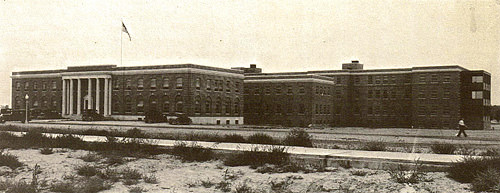
"A" Building (1929)
In a state-wide effort to close every mental hospital in Michigan during the early 1990s, Ypsilanti Regional Psychiatric Hospital was one of the first to close in 1991. The Center for Forensic Psychiatry remained open on the YRPH campus to treat criminals under psychiatric evaluation until the early 2000s, where it moved to the new facility nearby. The foremost complex on the campus consisting of administration, the laboratory, and the "A" wards were torn down in 2001-2002, then the entire complex was razed in 2005 to build a Toyota research facility. Prompted by the sale, an article called Opening Its Doors Again, published by Michigan Daily, re-visits the hospital's past.
The following images were scanned from the 1956 Ypsilanti State Hospital annual report.


